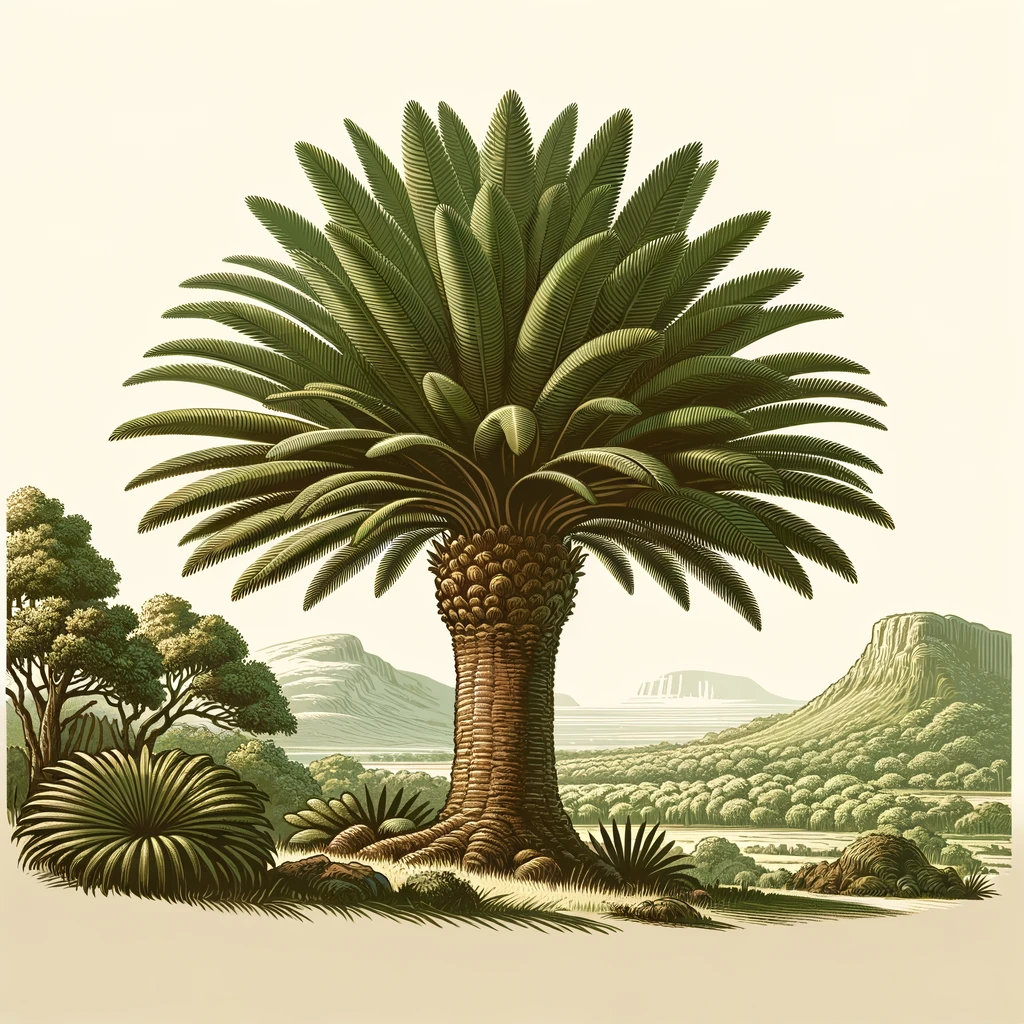In the verdant depths of South Africa’s forests, amidst the chorus of modern biodiversity, thrives a living relic from the age of dinosaurs. Encephalartos woodii, commonly known as Wood’s cycad, stands as a testament to the resilience and fragility of our planet’s botanical heritage. This rare plant, discovered in 1895 by John Medley Wood in the Ngoye Forest of KwaZulu-Natal, is a window into a bygone era, offering scientists, conservationists, and plant enthusiasts alike a glimpse into prehistoric flora.
A Discovery of the Ages
John Medley Wood, a botanist who left an indelible mark on the study of South African flora, could hardly have imagined the significance of his discovery. E. woodii is not just any plant; it is a dioecious species, meaning it has distinct male and female plants. Yet, in an intriguing twist of fate, no female specimen of this species has ever been found, either in the wild or in cultivation. This peculiarity renders natural sexual reproduction an impossibility, casting E. woodii as a botanical enigma.
The Lone Male
The sole surviving specimens of E. woodii are all male, cloned from the original discovery through offsets or tissue culture. This cloning process underscores the plant’s precarious position on the brink of extinction, reliant on human intervention for its survival. With its towering, woody trunk and crown of stiff, blue-green leaves, E. woodii is a majestic sight. The leaves, which can span several meters in length, are a testament to the cycad’s ancient lineage, their pinnate structure and sharply pointed leaflets evoking a prehistoric aesthetic.
A Conservation Challenge
The rarity of E. woodii, combined with its inability to reproduce sexually, has made it a coveted specimen for botanical gardens and collectors worldwide. However, this desirability comes at a cost, as the threat of over-collecting looms large. Conservation efforts are now primarily focused on vegetative propagation, ensuring that this unique species does not vanish from our world.
The challenge of conserving E. woodii is emblematic of broader environmental and ecological issues. Habitat destruction and the illegal plant trade are pressing concerns that threaten not only E. woodii but countless other species. The story of Wood’s cycad is a poignant reminder of our responsibility to protect and preserve the biodiversity of our planet.
A Symbol of Resilience and Vulnerability
Encephalartos woodii is more than just a plant; it is a symbol of both the resilience and vulnerability of Earth’s biodiversity. Its survival, against the odds, is a beacon of hope, demonstrating the potential for life to endure through the millennia. At the same time, its reliance on human intervention for propagation highlights the fragile balance of our natural world.

As we move forward, the tale of E. woodii encourages us to reflect on our relationship with nature. It challenges us to consider how we can contribute to the conservation of not just this ancient cycad, but all endangered species. Through a combination of scientific research, conservation efforts, and a commitment to environmental stewardship, we can ensure that the legacy of Encephalartos woodii, and the countless other wonders of our natural world, endure for generations to come.
